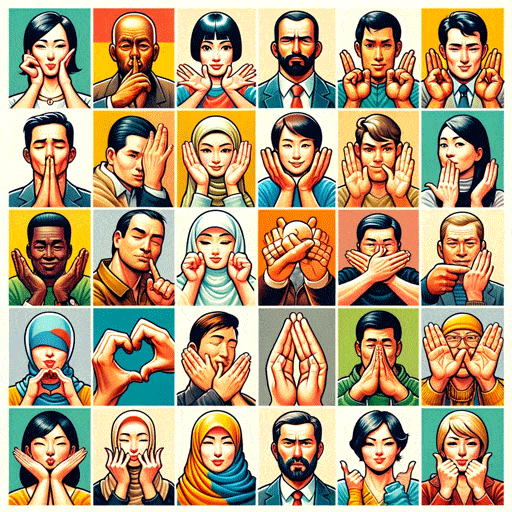
Here’s a list of body gestures commonly used in communication in various countries, including Italy, India, Japan, and others. Remember, these gestures can have different meanings in different cultural contexts:
1. **Italy**:
– **Hand Gestures**: Italians are known for their expressive hand gestures. Movements like the “finger purse” (pinching fingers together and moving the hand up and down) can emphasize a point or express disbelief or frustration.
2. **India**:
– **Head Nodding**: In India, a side-to-side head tilt or nod can mean “yes” or show agreement. It can also be a gesture of politeness or acknowledgement.
3. **Japan**:
– **Bowing**: In Japan, bowing is a common and respectful greeting. The depth of the bow can indicate the level of respect or gratitude, with deeper bows showing more respect.
4. **Greece**:
– **Moutza**: Extending all fingers and presenting the palm outward towards someone is a serious insult. It’s best avoided by foreigners.
5. **Thailand**:
– **Wai**: A traditional greeting where the palms are pressed together in a prayer-like gesture and raised to somewhere between chest and forehead, accompanied by a slight bow.
6. **Brazil**:
– **Cheek Kissing**: Common as a greeting, the number of kisses varies by region (usually one or two).
7. **France**:
– **La Bise**: Similar to Brazil, cheek kissing is a common greeting, with the number of kisses varying by region.
8. **Middle East (e.g., United Arab Emirates, Saudi Arabia)**:
– **Nose Touching**: Among men, touching noses can be a sign of greeting and respect.
9. **Russia**:
– **Firm Handshake**: A firm handshake is common when greeting, often accompanied by direct eye contact.
10. **USA**:
– **Thumbs Up**: This is generally a sign of approval or agreement.
11. **China**:
– **Handshakes**: Increasingly common, especially in business settings, but typically less firm than in Western countries.
– **Avoiding Physical Contact**: Traditionally, Chinese people may refrain from body contact – especially hugging and patting on the back – in more formal settings.
12. **United Kingdom**:
– **Queuing**: While not a gesture, the act of queuing (standing in line) is a significant part of British communication, symbolizing order and patience.
13. **Turkey**:
– **”O” Gesture**: Making a circle with the thumb and forefinger, with other fingers extended, can be an offensive gesture.
14. **Spain**:
– **Palms Open and Moving Up and Down**: Can express that something is expensive or a lot of money.
15. **Germany**:
– **Thumbs Pressed Against Forefingers**: Indicates something is ‘perfect’ or well done.
16. **Australia**:
– **”V” Sign with Palm Outward**: Similar to the UK, it’s a friendly sign meaning “peace” or “victory,” but with the palm facing inward, it can be offensive.
Remember, these are generalizations and can vary within countries and among different social or age groups. Cultural sensitivity and context are always important.















